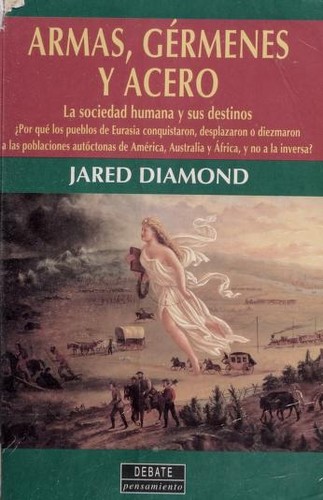527 pages
Spanish language
Published Jan. 25, 1998 by Debate.

527 pages
Spanish language
Published Jan. 25, 1998 by Debate.
Guns, Germs, and Steel: The Fates of Human Societies (previously titled Guns, Germs and Steel: A Short History of Everybody for the Last 13,000 Years) is a 1997 transdisciplinary non-fiction book by Jared Diamond. In 1998, Guns, Germs, and Steel won the Pulitzer Prize for general nonfiction and the Aventis Prize for Best Science Book. A documentary based on the book, and produced by the National Geographic Society, was broadcast on PBS in July 2005.The book attempts to explain why Eurasian and North African civilizations have survived and conquered others, while arguing against the idea that Eurasian hegemony is due to any form of Eurasian intellectual, moral, or inherent genetic superiority. Diamond argues that the gaps in power and technology between human societies originate primarily in environmental differences, which are amplified by various positive feedback loops. When cultural or genetic differences have favored Eurasians (for example, written language or the …
Guns, Germs, and Steel: The Fates of Human Societies (previously titled Guns, Germs and Steel: A Short History of Everybody for the Last 13,000 Years) is a 1997 transdisciplinary non-fiction book by Jared Diamond. In 1998, Guns, Germs, and Steel won the Pulitzer Prize for general nonfiction and the Aventis Prize for Best Science Book. A documentary based on the book, and produced by the National Geographic Society, was broadcast on PBS in July 2005.The book attempts to explain why Eurasian and North African civilizations have survived and conquered others, while arguing against the idea that Eurasian hegemony is due to any form of Eurasian intellectual, moral, or inherent genetic superiority. Diamond argues that the gaps in power and technology between human societies originate primarily in environmental differences, which are amplified by various positive feedback loops. When cultural or genetic differences have favored Eurasians (for example, written language or the development among Eurasians of resistance to endemic diseases), he asserts that these advantages occurred because of the influence of geography on societies and cultures (for example, by facilitating commerce and trade between different cultures) and were not inherent in the Eurasian genomes.